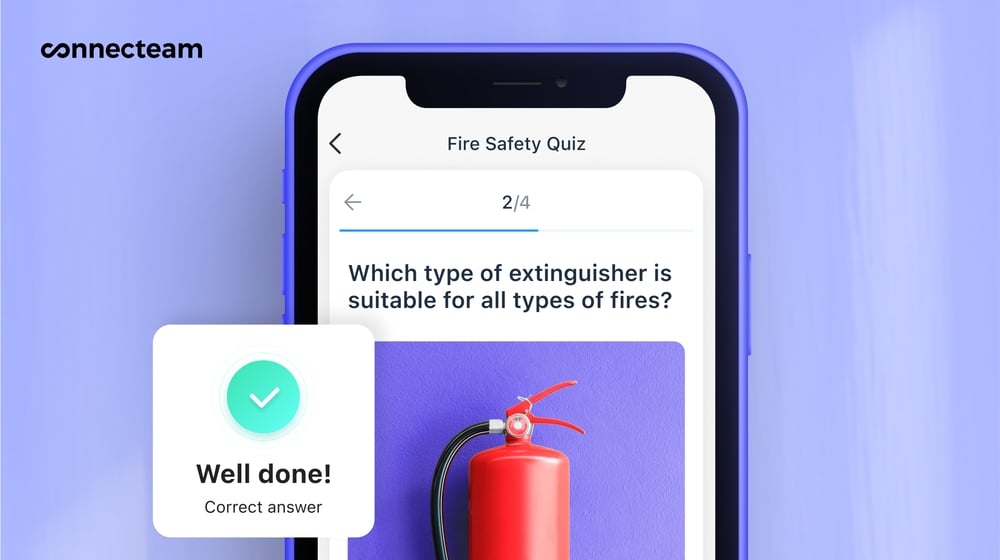Excellent people management skills help enhance employee well-being while increasing productivity and reducing turnover. In this article, we cover 10 essential people management skills and how you can improve them.
A great manager can make employees feel seen, understood, and confident. Your mastery of soft skills like communication and empathy can make a huge difference in your employees’ well-being and satisfaction.
The dreaded saying, “People leave bad managers, not bad jobs,” exists for a reason. Managers lacking strong people management skills usually see increased employee turnover.
But skills like conflict resolution and delegation can help avoid this—while enabling you to foster collaboration and productivity.
We can help.
In this guide, we explain why people management skills are vital for managers, break down 10 must-have skills, and offer some tips on how to improve them.
Let’s get started!
Key Takeaways
- When you’re managing people, skills like communication, mentoring, and transparency help build stronger relationships, increase productivity, and lower employee turnover.
- Listening to your team members enables you to make better decisions across training, conflict resolution, and more.
- Effective delegation, problem-solving, and decision-making help increase your team’s performance. Plus, communicating decisions transparently can increase trust.
- Software featuring tools like internal communications and training helps you practice people management skills more quickly and efficiently.
What Are People Management Skills?
People management skills are soft skills managers use to ensure their team’s success across productivity, job satisfaction, and other areas.
For instance, such skills help you have productive one-on-one conversations with team members. They also enable you to maintain your team’s focus in high-pressure situations.
Why Are People Management Skills Important?
Here are some benefits of effective people management.
Better employee relationships
People skills like communication, trust building, and emotional intelligence help build better employee relationships. They support manager-employee relations and connections between team members.
When managers set positive examples, other coworkers follow suit. Teams led by managers with strong people management skills are more trusting, collaborative, and supportive.
This Might Interest You
Read our guide on the benefits and importance of employee relationship management.
Lower employee turnover
Studies show that around 50% of workers leave their jobs due to poor management, but workplace improvements—including enhanced communication and growth opportunities—can bring this statistic down.
Using people skills like emotional intelligence and gaining trust, you can spot the types of improvements that increase worker satisfaction and decrease turnover. For instance, you may learn that more transparent top-down updates inspire employee loyalty.
Enhanced productivity and customer outcomes
Management styles impact productivity increases—just as much as research and development spending does. So, investing resources into building people management skills can deliver high returns through enhanced productivity and customer outcomes.
For instance, effective task delegation and training help your team hit deadlines and key performance indicators (KPIs), leading to high-quality project delivery and happy clients.
10 People Management Skills Every Manager Must Have
Here are the top people management skills to cultivate in your team.
Communication and listening
Communication and listening top our skills list. They’re the bedrock of many other soft skills, allowing you to foster collaboration, train and motivate staff, and resolve conflicts.
Good communication includes being concise, specific, engaging, and adaptable while choosing the right channel, timing, and tone for specific situations. For example, mentoring an employee on avoiding burnout may require a one-on-one conversation that’s separate from task-related discussions. Meanwhile, you can announce a new client project in the team chat in a celebratory tone at any point in the workweek.
Communicating also goes hand in hand with listening, which requires you to pay close attention to your team members to understand their intentions and obstacles. This skill combo particularly helps when:
- Facilitating top-down communications like product announcements and bottom-up ones like employee feedback.
- Welcoming new members to the team.
- Having difficult conversations—for instance, declining time-off requests.
- Offering constructive feedback and career advice.
Training and mentoring
Employees who receive excellent professional development are better at their jobs and stay for longer. So, a successful manager must be able to deliver training and mentoring.
Here are some basic training and mentoring guidelines.
- Personalize your training methods according to individuals’ unique skill levels and learning styles. For instance, some people learn more easily through visuals, while others prefer reading and writing.
- Anticipate team members’ needs and questions and weave them into your training content.
- Encourage mentees to take co-ownership of the mentoring relationship. For example, ask them to prepare questions, ideas, and goals.

Did You Know?
Connecteam is an employee training software that lets you create and distribute engaging, individualized training modules. Your workers can access these straight from their mobile devices, and you can monitor their progress in real time.
Get started with Connecteam for free today!
Conflict resolution
Conflict is inevitable in working life, so managers must be ready to apply conflict resolution skills. First, hear and acknowledge each party’s point of view. Then, determine the outcome each wants and why.
Furthermore, establish mutual respect and encourage emotionally balanced conversations. Finally, identify the best solution that’s favorable for the working environment while addressing the needs of the parties involved.
For example, say 2 team members refuse to work together after disagreeing on how to perform a task. You can speak to each person separately and summarize their points, then moderate a conversation between them to determine a compromise.
This Might Interest You
Read our guide on sensitivity training in the workplace to help employees become aware of their attitudes, biases, and behaviors that might negatively impact their colleagues.
Problem-solving
Managers must deal with a broad range of problems—from fixing skill shortages and optimizing workflows—to enhancing employee engagement and preventing burnout. Solving problems successfully requires a result-oriented mindset and a practical approach that considers resource availability.
You’ll reach solutions more quickly and effectively by applying problem-solving frameworks, including:
- The 5 whys: asking “why” 5 consecutive times to get to the root cause of a problem. For example, asking 5 whys after the statement “Employees are disengaged” could lead to the root cause “We don’t run any informal social activities.”
- Mutually exclusive collectively exhaustive (MECE): grouping the elements of a whole into categories that don’t overlap or leave out any items. For example, to tackle employee burnout, you could classify causes into “internal factors” like workload and task variety and “external factors” like commute times and external stressors.
- The 80/20 rule: focusing on the 20% of the input that determines 80% of the output. For example, you can help overwhelmed employees by pointing out the tasks (input) most impactful to business results (output).
Decision-making
Decision-making is a key leadership skill in management that prompts a set of practical actions.
A good decision-maker comfortably takes risks while recognizing that certain factors are beyond the team’s control. This is especially important when making tough decisions, like assigning employees to different projects due to negative team dynamics.
Additionally, you must:
- Be specific about the goal you’re trying to achieve. For instance, “boosting team collaboration by implementing weekly cross-departmental meetings” is more specific than “improving team dynamics.”
- Estimate the probability that your decision will lead to the intended aim.
- Have a shortlist of 2 or 3 potential decisions and a system to choose the winning one. For example, you might compare their costs and benefits.
- Be open to critique from other coworkers and include their opinions in your decision-making process.
Delegation
Delegation helps keep the whole team accountable for business results. By delegating, you also utilize resources efficiently—for instance, by not overwhelming certain team members with tasks while giving others excess free time. Aim to delegate tasks according to skills and qualifications to ensure they’re completed efficiently.
Attempting to control how and when team members do tasks is tempting. But this “micromanaging” can increase stress in the team. Instead, you should:
- Give clear and concise task instructions, including deadlines and KPI expectations.
- Have an “open door policy” so team members can always ask questions and raise concerns.
- Seek solutions when individuals don’t meet expectations, such as re-delegating tasks to coworkers.
Did You Know?
Connecteam is a free task management app that makes delegating tasks to employees quick and easy. Assign and repeat tasks in just a couple of touches. Include instructions, due dates, and more.
Motivation and recognition
Effectively motivating your team is an important people management skill. It bolsters employee performance and productivity while fostering a positive morale and culture.
Offering recognition is key to motivating employees. For example, you can draw attention to excellent performance publicly or privately and set up competitions like “employee of the month” to reward top achievers.

That said, you should identify employees’ unique motivating factors to provide more tailored recognition.
For instance, many people enjoy verbal praise, but others find challenges, constructive feedback, progression opportunities, or higher compensation to be more motivating.
Pro Tip
Use a recognition and rewards app to streamline the way you show appreciation to your team. For instance, Connecteam’s gift card rewards for employees lets you offer gift cards, customize reward content, run employee-of-the-month programs, and acknowledge employee milestones in the company newsfeed.
Transparency and trust
Maintaining transparency and trust helps build authentic work relationships. Conversely, employees who perceive you as secretive or opportunistic may become less open with you. This can lead to long-term conflict or quiet quitting (where employees disengage mentally from their work without formally quitting).
Here are some areas where it’s important to build trust and transparency:
- Policy clarity and consistency: Explain company policies—say, anti-bullying policies—thoroughly and enforce them fairly.
- Everyday decisions: Explain your actions where relevant, allow the team to challenge you, and admit when you’re wrong.
- Change management: Communicate company changes in a timely manner, answer team members’ questions, and mentor individuals struggling to adapt.
Did You Know?
Connecteam’s team instant messaging lets you reach any team member securely and instantly. Communicate important company updates to individuals and groups, plus link to other Connecteam features—like shift schedules or team documents.
Flexibility
Remain flexible in your decision-making. Ignoring your team’s changing needs could turn into dissatisfaction and a lack of trust.
For instance, look out for changes in team members’ career interests or priorities. Are they interested in another product line? Would they like to upskill for a more technical role?
If so, what resources and guidance can you offer? Good managers are open to making changes in training, task delegation, and communication style based on new information.
Emotional intelligence
Emotional intelligence is central to managing people. It helps you and others stay emotionally healthy, leading to greater well-being and productivity.
Being aware of others’ and your emotions allows you to calm down in stressful situations and offer others space or support when they’re upset at work.
It also helps you encourage and inspire others, creating a positive work environment. To achieve this, practice showing empathy and vulnerability while giving others space to share their experiences.
For instance, you might notice a low mood in your team. Find ways to understand the issue—like proposing an end-of-day informal team chat to encourage workers to open up.
Then, pick a feasible solution that can lift the mood, such as a day off for team mental health.
This Might Interest You
Read our guide on how to develop the best soft skills training for employees.
How To Improve Your People Management Skills
Managing people skills on top of your daily duties might seem a bit daunting—but it doesn’t have to be. Here are 3 straightforward strategies to improve your people management skills.
Let your team’s needs guide you
Rather than trying to ace all 10 skills at once, lead with the ones your team needs from you. For instance, when your team members are uncertain about upcoming tasks, focus on delegation and decision-making skills.
Similarly, when your direct reports have various reactions to a big company change, practice transparency, mentoring, and emotional intelligence.
Prioritize skills to work on
When you’re not reacting to external situations, prioritize improving 2 or 3 skills at a time. To choose relevant ones, identify the people management skills you’re lacking with the help of a trusted coworker or through feedback from those you interact with at work.
Then, find ways to progressively improve those skills. For example, to excel at problem-solving, learn and practice problem-solving frameworks.
Pro Tip
Consider using 360-degree reviews to gather feedback on your performance from multiple sources, including employees and clients.
Leverage software solutions
Being tech-savvy can help accelerate your skill development. For instance, workplace software enables you to communicate, delegate tasks, monitor performance, and more.

Here are examples of software tools that support your people management skills.
- Internal communications: Instant chats, video calls, and announcement feeds enable you to communicate effectively, provide mentoring, and share transparent updates.
- Workforce management: Schedule-builders, task management, and recognition features let you practice delegation and motivation skills.
- Training: Creating training modules and tracking individual progress enable you to improve your training and mentoring skills.
Did You Know?
Connecteam is an all-in-one employee management software that combines training and chat tools with scheduling, task management, and performance reporting. Our app makes practicing essential people management skills easy, including delegation, communication, and decision-making.
The Bottom Line on People Management Skills
When managing people, skills like communication, flexibility, and trust-building help increase team productivity and job satisfaction. Overlooking such skills can have undesirable consequences, like employee turnover. Luckily, you can gradually build your skill levels by prioritizing a few skills at a time.
Employee management software like Connecteam makes building people management skills more straightforward. By using tools like instant chat, training development, and task assignment, you’re already practicing key skills—including delegation, mentoring, and communication.
FAQs
What are the 5 Cs of people management?
The 5 Cs of people management are create, comprehend, communicate, collaborate, and confront. These refer to creating systems and processes, understanding team members, communicating effectively, enabling collaboration, and resolving conflict.
What are examples of people management?
An example of people management is supporting a team member who’s uncertain about their career goals. You must use communication, mentoring, and problem-solving skills to guide them. Another example is managing a disagreement between colleagues, which requires conflict resolution, emotional intelligence, and decision-making skills.

